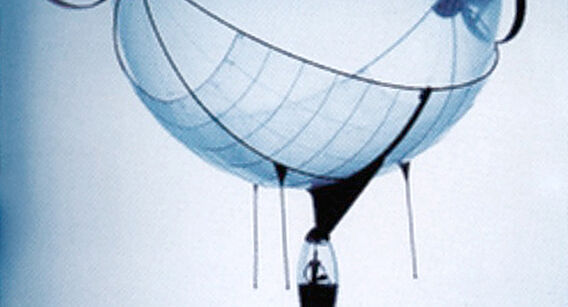Appreciation of the winner
by Konstantin Grcic – Konstantin Grcic Industrial Design
Apollo 11, the world’s first manned spacecraft, was launched into space in 1969. On July 20 of the same year, the first man set foot on the moon – Neil Armstrong. The message he radioed to earth – “One small step for man, one giant leap for mankind” – has become a legend. One day later, journalist Russel Baker reported in the New York Times: “So there he is at last. Man on the moon. The poor magnificent bungler! He can’t even get to the office without undergoing the agonies of the damned, but give him a little metal, a few chemicals, some wire and twenty or thirty billion dollars and, vroom!, there he is, up on a rock a quarter of a million miles up in the sky.”
The moon landing has changed our lives on earth. Man has made the impossible possible. Mankind’s faith in its own intelligence and the power of technology seemed endless. Today, at the end of the millennium, our perspective has relativized. The naïve vision of a streamlined future has long since made way for the reality of the present. Had our view of the moon obscured our view of the earth? The world has become smaller and the increasing destruction of it no longer can be overlooked. Securing our habitat for the future is the responsibility of the present generation.
It is hard to imagine that some regions of our planet still remain unexplored. Take the tropical rainforest, for example, only over the past 15 years has its crucial importance been confirmed by scientists. However, despite a myriad of individual investigations, we know little about complex ecologic interactions. In his diploma thesis, young designer Axel Schmid dealt with the topic of rainforest research. He had become aware of the issue from a report in National Geographic. Extensive studies of the rainforest had been impeded, mainly because accessing the treetops, at heights of up to 70 meters, was possible only under extremely adverse conditions. Schmid wondered if it could be harder to send a person into the rainforest than to the moon. As meticulous as any scientist, Schmid read up on the topic and consulted with experts. As curious as any explorer, he plowed ahead with his mission.
Schmid’s results are astonishingly simple: a small, electrically-operated spacecraft with which scientists can reach the depth of the rainforest from the treetops. “Carefully and with the interests of the forest in mind, not aggressive or brutal,” is how Schmid describes the model. He constructed a helium-filled balloon under which the scientist hangs in a small cabin. Thanks to its rotating axis, the droplet-shaped balloon can be operated both as an airship (the droplet is in a horizontal position and the propeller ensures forward feed) and as a helicopter (the drop is in an upright position and the propeller ensures the lift). With an energy reserve of about two hours, the scientist can steer the balloon above the treetops to the location where the research will be conducted. There, he can land the balloon gently on the treetops and, along with the cabin, can climb down to the site using a rope winch. When the mission has been completed, he uses the lifting power of the balloon to leave the treetops and fly back to the base.
Schmid convinced the jury with the intellectual maturity of his work. The proportionality of the means is one of the many qualities of his model. Airships for use in tropical rainforests must have a simple structure and must work reliably. Schmid proposed convincing technological solutions up to the smallest details, and designed them with a great deal of sensitivity. The airship/helicopter is a combination of technological innovation and the poetics of the pioneers of aviation.
With this work, Schmid represents a new generation of designers who take up the challenge of responsibility in our times with creativity and commitment (without putting aside the dream of flying!).
On July 20, 1999 – exactly 30 years after Apollo 11 – a manned flying object could start its venture into the unexplored depths of the tropical rainforest. A small venture for man – a giant mission for mankind …


